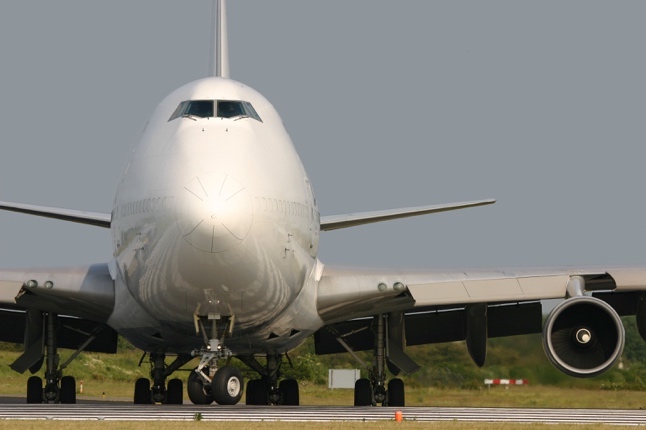Air Partner’s dedicated aircraft remarketing service was established 22 years ago, acting for airlines, banks, lessors and other aircraft owners to help them sell or lease any surplus commercial jets, corporate jets, turboprops and helicopters.
Over the past two decades, we have seen some challenging times for airlines and leasing companies but COVID-19 has perhaps already had the most dramatic effect on airlines and leasing companies around the world. Unfortunately, due to these unpredicted times, it is inevitable that we will see some airline and lessor casualties.

Airlines vary in terms of their aircraft financing, ranging from those (in the minority) who own their aircraft with no bank debt, loans or other financing, to airlines who have a 100% leased fleet. When the outbreak of COVID-19 began to spread and aircraft were grounded, the effects on those with owned fleets was less severe. However, on the opposite side, an airline with a 100% leased fleet still has a large capital cost outflow even when it is not operating the aircraft. Lessors still require payment from the airline, as they have their own costs to meet.
When an airline completely owns its fleet, it will usually comprise of older aircraft that were cheaper to buy or aircraft that have been fully depreciated. These aircraft will be less fuel-efficient and more expensive to maintain and operate. However, an airline with a 100% leased fleet is likely to have newer and more fuel-efficient aircraft that incur lower maintenance costs.
Prior to the COVID-19 outbreak, many of the airlines that ceased operations had mainly leased fleets (e.g. Monarch and Germania) so when they ran into financial difficulties, they were not able to downsize and adjust to the market conditions. Operating leases are efficient in terms of initial cashflow (usually three months rental deposit plus rental one month in advance) but very hard to cut short without extremely harsh penalties. Whereas, if an airline owns the aircraft, it can sell them immediately, providing it with cash in the bank and reducing costs on insurance, maintenance, etc.
The ideal plan for airlines to survive a crisis such as COVID-19 is to have a mix of owned and leased aircraft, particularly for scheduled passenger airlines. A certain proportion of the fleet should be new (or fairly new), highly fuel-efficient current production aircraft, such as B737s, A320s, A330s, A350s and B777s or regional jets like the C Series and E-jets. Flying 300+ hours per month means fuel savings would normally outweigh the higher capital costs, but when airlines fly multiple sectors per day on relatively short routes (90 minutes or less), the fuel saving between a brand new A320neo versus a 20-year-old classic A320 is not significant. Therefore, a mix of older and newer narrow-body aircraft is quite efficient and would enable flexibility in scheduling in winter versus summer or reduced traffic due to a major issue such as COVID-19. Taking IAG as an example, it is able to park 30+ older B747s and A340s from the British Airways and Iberia fleets, all of which are 100% owned. Jet2, as another example, owns nine B757s and seven B737-300s that can be taken out of service to reduce capacity.
Future market predictions
Looking ahead to after the pandemic, there certainly will be some narrow-body aircraft available from airlines which weren’t able to survive the current crisis. The planned re-introduction of the B737 MAX will be considerably delayed due to the huge demand on MRO (maintenance, repair and operations) facilities to get current fleets back flying so those airlines that were due to take deliveries of the MAX will turn to the used market. The cargo market will also take advantage of the used B737-800s, A320s and A321s that will be available as feedstock. However, these are short term issues and we forecast that the narrow-bodied aircraft market will not be significantly impacted in the longer term.
For wide-body aircraft, this market was clearly already under pressure before the COVID-19 outbreak. The cargo market will enjoy a supply of relatively new A330s and B777-300ERs at values significantly below even the most pessimistic numbers from the appraisal companies. Ultimately, there are a number of older B747Fs and MD11Fs that need replacing so there should be a reasonable appetite for these aircraft. ACMI (aircraft, crew, maintenance and insurance)/charter operators will benefit from low lease rates or PBH (power by the hour) deals on older A330s and B777s. These carriers could see a busy period later this year as airlines struggle to return parked aircraft due to overdue maintenance and pilot training.
In terms of wide-body aircraft supply, clearly Boeing and Airbus will take some time to ramp up to their original production numbers and many of their suppliers will struggle as well. A lot of airlines and lessors will no longer require the aircraft they have on order. It therefore might be sensible if wide-body aircraft production rates are kept very low for up to two years so the overall market can recover together. The glut of wide body availability could be used instead.









